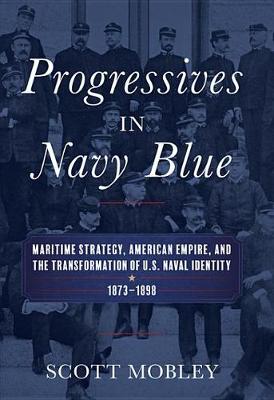This study examines how intellectual and institutional developments transformed the U.S. Navy from 1873 to 1898. These dates bracket a dynamic quarter-century duringwhich Americans witnessed their navy transform from a modest imperial constabulary into a powerful mechanized force designed principally for national defense. Cultures ofprogress-clusters of ideas, beliefs, values, and practices pertaining to modern warfare and technology-guided the Navy's transformation. Working together, naval officers andcivilian policy-makers radically upgraded the Navy's technology, reconceived the nation's strategic foundations, and redefined the naval profession.
For most of the nineteenth century, the United States maintained a ""peace"" navy to support aspirations for an overseas maritime empire. The Navy during this time existed principally to police and promote U.S. commercial activities abroad. Meanwhile, civil leaders remained confident they could improvise a ""war"" navy to meet any emergency the nation might encounter. Within the officer corps, the peace navy culture bolstered a professional identity that valued expertise in seamanship and gunnery, while attaching little importance to strategy, fleet operations, and other advanced warfare skills.
The 1880s witnessed a fundamental shift in naval mission priorities that helped toreshape both the navy and the professional identity of its officers. Troubled by developments in military technology and international politics, U.S. policy-makerssupplanted the constabulary tradition with a new focus on national defense. Within this shifting context, the ""new navy"" of the 1890s represented a reversal of customary mission sets: war and national security needs eclipsed peace and commercial empire-building as the service's organizing principles. In addition to spurring technological transformation within the fleet, these changes energized efforts to cultivate strategic thought and practice among naval officers, helping to engender anew professional identity-that of ""Strategist.""
The agents of naval transformation embraced a progressive ideology. They viewed science, technology, and expertise as the best means to effect change in a world contorted by modernizing and globalizing trends. Moreover, the methods and accomplishments of Gilded Age naval reformers anticipated the wider surge of U.S. progressive-era development by some ten or twenty years. Within the navy's progressive movement, two new cultures-Strategy and Mechanism-influenced the course of transformation. Although they shared progressive pedigrees, each culture embodied a distinctive vision for the Navy's future. The conflict resulted, and the tensions between strategists and mechanists ultimately forged the dichotomous ""Warrior-Engineer"" identity of modern naval officers.
- ISBN10 1682471942
- ISBN13 9781682471944
- Publish Date 15 May 2018
- Publish Status Active
- Imprint US Naval Institute Press
- Edition Digital Only ed.
- Format eBook
- Pages 432
- Language English
